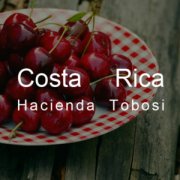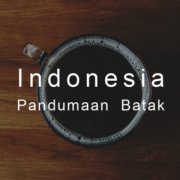Introduction of Ethiopian Water washing Sidamo G1 Sukowell Ethiopia Sidamo Suke Ware

For professional baristas, please follow the coffee workshop (Wechat official account cafe_style)
There are eight major coffee producing areas in Ethiopia: Ekempti, Limu, Illubabor, Djimma, Harrar, Teppi/Bebeka, Sidamo and Yirgacheffe. Ethiopian coffee is highly rated in Taiwan, especially Chinese people are particularly interested in and love the three more famous producing areas of Ethiopia, namely Harrar, Sidamo and Yirgacheffe. Sidama province is located in the south of Ethiopia, with Arsi province in the north, Bale province in the east and Gamu Gofa province in the west. The jurisdiction of Sidama province includes two well-known producing areas, Yirgacheffe and Kochere. The industry is dominated by agriculture, and the coffee growing area is located around the East African Great Rift Valley (Great Rift Valley). Sidama province is located in southern Ethiopia, where agriculture is the main industry, while the largest town in Sidamo province is Hawassa, which is an important local coffee export distribution center. The coffee flavor of Sidamo is very diverse, because of the different soil composition, regional microclimate and countless native coffee varieties, the coffee produced in each urban area has obvious differences and characteristics.
Ethiopian coffee can be divided into two treatments. Washing treatment method II. Natural sun treatment. Nowadays, every cooperative or even a small coffee farm in Ethiopia produces coffee beans of the above two treatments at the same time, whether it is the well-known Yegashev producing area in Taiwan or the Sidamo producing area. Not only that, in Ethiopia, which is currently the country with the fastest development of coffee, there is a difference in the treatment of coffee, but also because of the problem of water source, places where there is a shortage of water will be treated directly in the sun. Yegashev sun beans are different from Sidamo sun beans in aroma, which often give people an illusion. Ethiopian coffee beans washed with water. The aroma is mild, low-sinking, citric acid is soft and low-key, the consistency of flavor is high, and the taste of Ethiopian coffee beans is won by taste, while the strong aroma of Ethiopian coffee beans shows the weak and inconspicuous flavor of citric acid, the complex and changeable flavor is characterized by flower or fruit fragrance.
The batch comes from Suke Ware, a mini-production area in Sidama province in southern Ethiopia, about 50 miles from the Ethiopian capital, Addis Ababa. The town of Sukowell, like other villages, combines the place with all the local coffee farmers to form a group. It has an excellent geographical environment, crops are the main source of income, in addition to coffee also grow corn and other. Due to abundant rainfall and altitude conditions create good agricultural quality, and coffee growing areas fall in the average altitude of about 1800 to 2200 meters at an excellent height. This batch of coffee is washed with flavor description: orange peel, sweet spices, honey, cake-like sweetness, delicate aftertaste.
Production area: Sidamo (Sidama) Su Kewell (Suke Ware)
Producer: Suke Ware, local coffee farmer
Varieties: native species (Heirloom)
Haiba: an average of 1800 to 2200 meters
Grade: G1 (highest grade of washing)
Treatment method: washing treatment
Important Notice :
前街咖啡 FrontStreet Coffee has moved to new addredd:
FrontStreet Coffee Address: 315,Donghua East Road,GuangZhou
Tel:020 38364473
- Prev

Costa Rica Torbush Manor Tobosi&Copey Manor Information Vera Rob Villalobos
Professional baristas please follow the coffee workshop (Wechat official account cafe_style) Tobosi was born in 2010, to provide high-quality boutique coffee, with the goal of becoming a leader in the supply of boutique coffee. Strive to produce products in an open and transparent system and have a complete track record to ensure that customers can get the best products. The one provided
- Next

Introduction of semi-washing treatment method Giling Basah in Pangduoman Village, Lindong Lintong, Indonesia
For the exchange of professional baristas, please follow the coffee workshop (Wechat official account cafe_style) Indonesia introduced Arabica coffee during the Dutch colonial period in the 18th century and began to grow it, until modern times it has become the top coffee producing country in the world, mainly in Sumatra, Java and Sulawesi. This bean is used to grow coffee on the banks of Lake Toba in northern Sumatra.
Related
- Detailed explanation of Jadeite planting Land in Panamanian Jadeite Manor introduction to the grading system of Jadeite competitive bidding, Red bid, Green bid and Rose Summer
- Story of Coffee planting in Brenka region of Costa Rica Stonehenge Manor anaerobic heavy honey treatment of flavor mouth
- What's on the barrel of Blue Mountain Coffee beans?
- Can American coffee also pull flowers? How to use hot American style to pull out a good-looking pattern?
- Can you make a cold extract with coffee beans? What is the right proportion for cold-extracted coffee formula?
- Indonesian PWN Gold Mandrine Coffee Origin Features Flavor How to Chong? Mandolin coffee is American.
- A brief introduction to the flavor characteristics of Brazilian yellow bourbon coffee beans
- What is the effect of different water quality on the flavor of cold-extracted coffee? What kind of water is best for brewing coffee?
- Why do you think of Rose Summer whenever you mention Panamanian coffee?
- Introduction to the characteristics of authentic blue mountain coffee bean producing areas? What is the CIB Coffee Authority in Jamaica?

